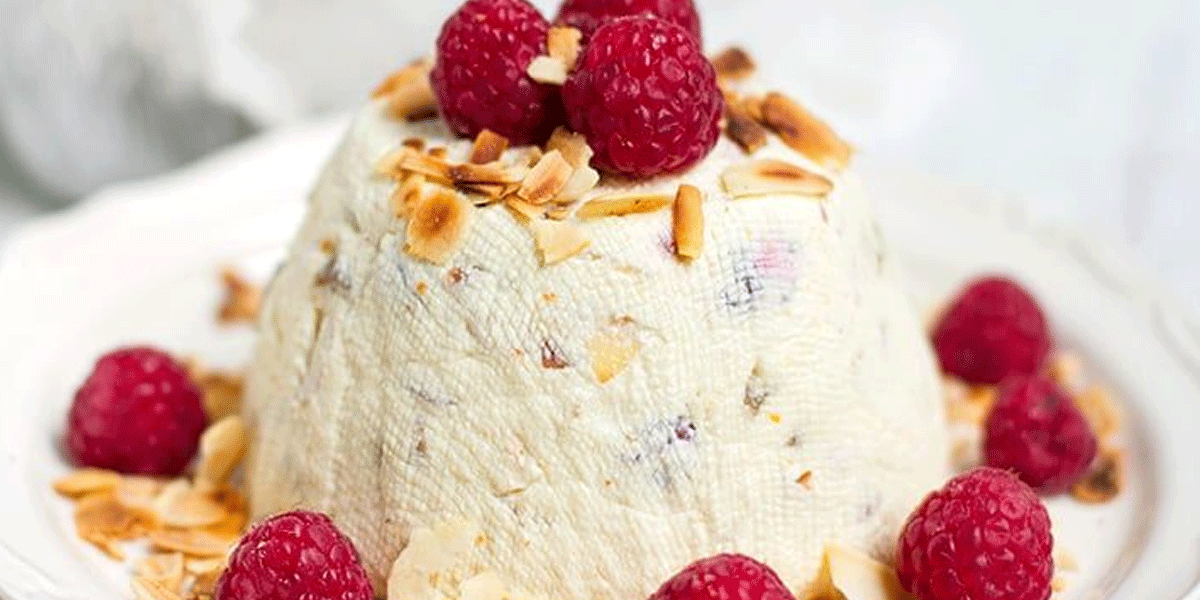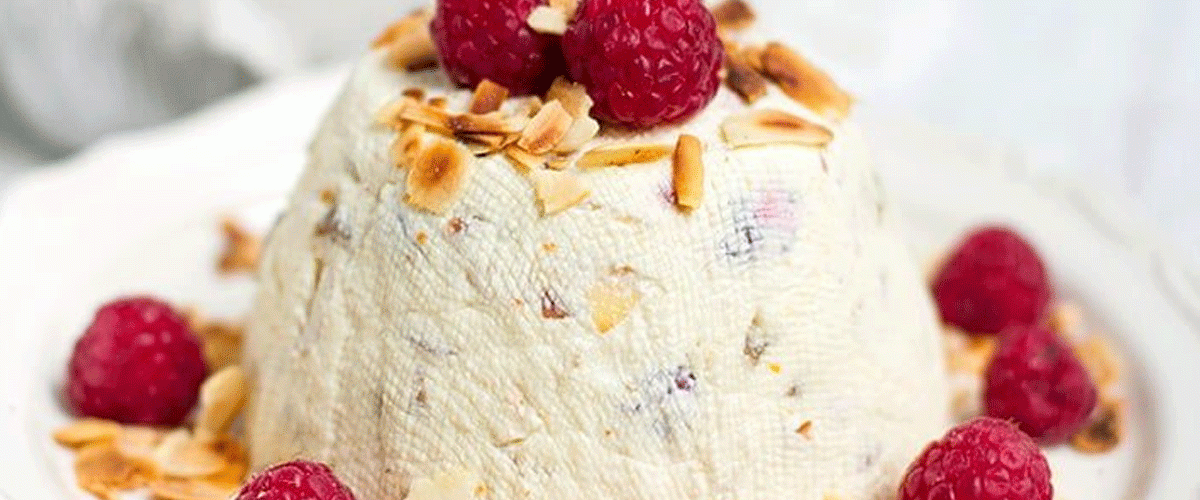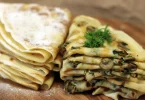Pashka (Russian Easter Dessert) Recipe – Russian Special

Pashka is a cherished traditional Russian Easter dessert, a creamy, no-bake cheesecake-style pudding made from rich curd cheese (tvorog), sweetened with honey, and studded with dried fruit and almonds. Formed in a distinctive religious mold and chilled until firm, it’s often served alongside Easter bread—a festive, elegant treat that symbolizes purity and resurrection.
- Prep Time20 min
- Cook Time20 min
- Perform Time24 hr
- Total Time24 hr 40 min
Pashka (Russian Easter Dessert) Ingredients :
- 2 pounds farmers cheese, or dry curd cottage cheese
- 5 large egg yolks, at room temperature
- 2 3/4 cups confectioners’ sugar
- 1 cup heavy cream
- 1/2 cup coarsely chopped almonds
- 1/2 cup golden raisins
- 1 cup candied citron, chopped
- 2 teaspoons vanilla
- 8 ounces (1 cup) unsalted butter, softened and whipped
- Almonds, for garnish
- Glacé cherries, for garnish
- Candied citron, for garnish
- Green leaf candies, for garnish
How To Make Pashka (Russian Easter Dessert)
Pass the farmer’s cheese through a sieve or food mill and set it aside.
In the top of a double boiler, combine egg yolks and sugar. Add cream and heat over simmering water, stirring constantly until bubbles form around the edge of the pan. Avoid overheating to prevent curdling.
Remove from heat and add the reserved cheese, almonds, raisins, citron, and vanilla, stirring well. Incorporate the softened butter and continue stirring until the mixture cools, ensuring a smooth and velvety texture for the paska.
If using a paska mold, line it with double layers of dampened cheesecloth.
Pour the mixture into the mold and cover with another double layer of dampened cheesecloth. Place a lid or small plate on top and weigh it down with a heavy can. Position a bowl beneath the mold to catch any excess liquid, then refrigerate for 24 hours.
Unmold onto a serving plate and decorate with almonds, glacéed cherries, candied citron, and optional green leaf candies. Slice thinly as it is quite rich.
If using a new terra cotta flower pot, follow the same steps as above.
For forming into a ball, wrap the mixture tightly in a double layer of dampened cheesecloth over the sink. Twist into a firm ball shape.
Place in a colander with a bowl underneath, cover with a plate, and weigh it down with a heavy can. Proceed with refrigeration as described.
For a perfectly round ball, secure the cheesecloth with butcher’s twine and hang it from a rack in the refrigerator, positioning a bowl underneath to catch any drips.
Recipe Notes:
Cheesecake Texture: Use well-drained curd cheese or strained cream cheese to achieve a smooth, dense, and moldable texture.
Mold Assembly: Line your mold or bowl with cheesecloth to simplify unmolding and help drain excess moisture.
Chilling Time: Chill the assembled Pashka for at least 12 hours (or overnight) to ensure it sets firmly.
Flavor Add-ins: Customize with brandy or orange zest for a flavor boost, and decorate the top with candied fruit or whole nuts before serving.
Serving Occasion: Traditionally served during Orthodox Easter alongside festive breads, but also delightful as a celebratory dessert for special occasions.







